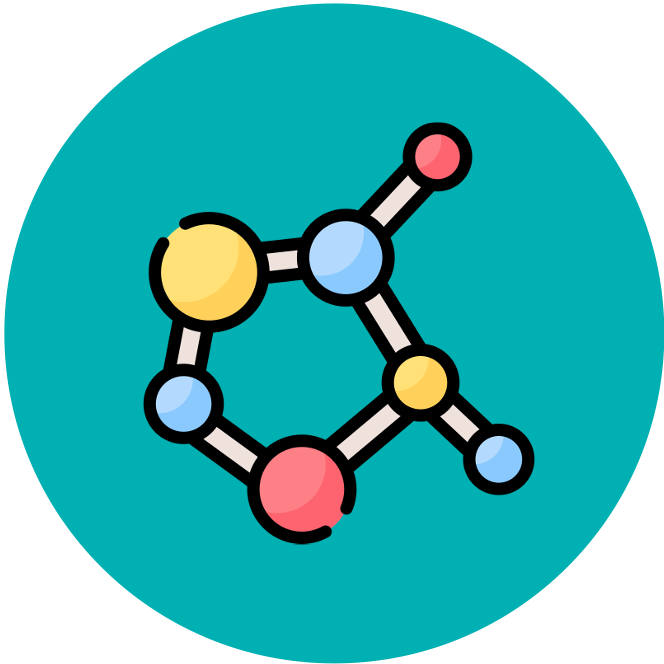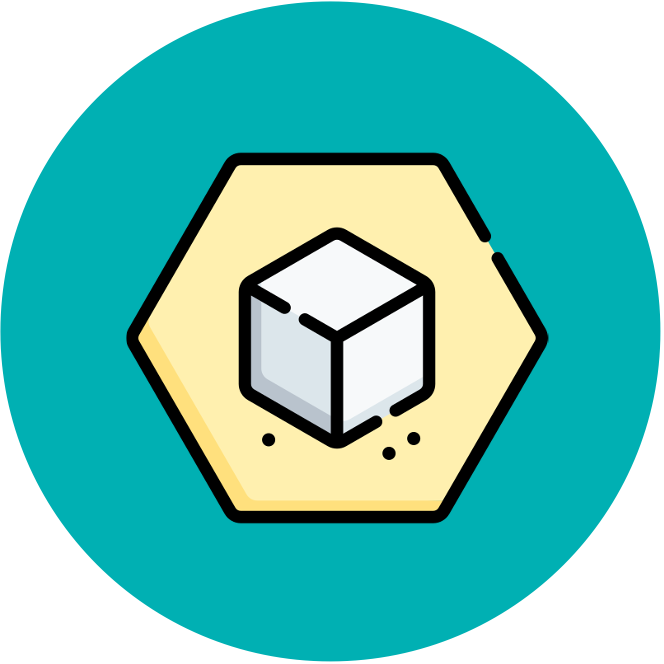

Sugar Functions
Energy Storage
Polymers of ⍺-glucose are used in energy storage – glycogen is used in animals and starch is used in plants
-
Glucose monomers can be added or removed (by condensation or hydrolysis reactions) to build or mobilise these energy stores
In both glycogen and starch, the ⍺-glucose monomers are connected via 1’ – 4’ glycosidic linkages to form helical structures
-
Starch can exist as linear strands (amylose) or be branched (amylopectin) due to the presence of additional 1’ – 6’ linkages
-
Glycogen is a more highly branched molecule than amylopectin as it possesses more frequent 1’ – 6’ linkages
Branching causes the polysaccharides to adopt a more compact structure, but their large molecular size renders them insoluble in water
-
This means that glycogen and starch are efficient storage molecules but not suitable from transport within aqueous solutions (like the blood or sap)
-
However the carbohydrates can be readily digested to release monomers or dimers for transport to other tissues
Glycosidic Linkages
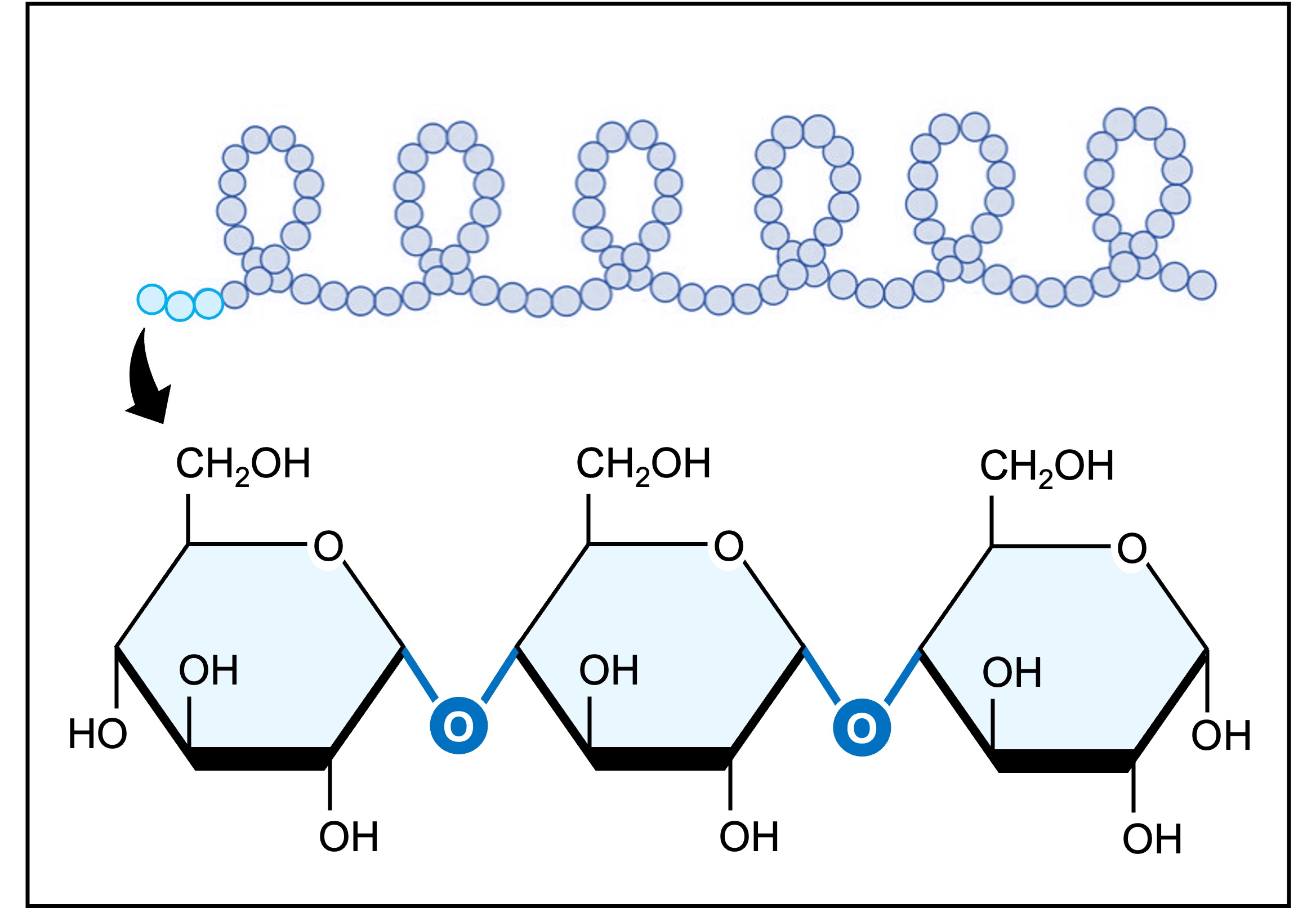
1–4 Linkages
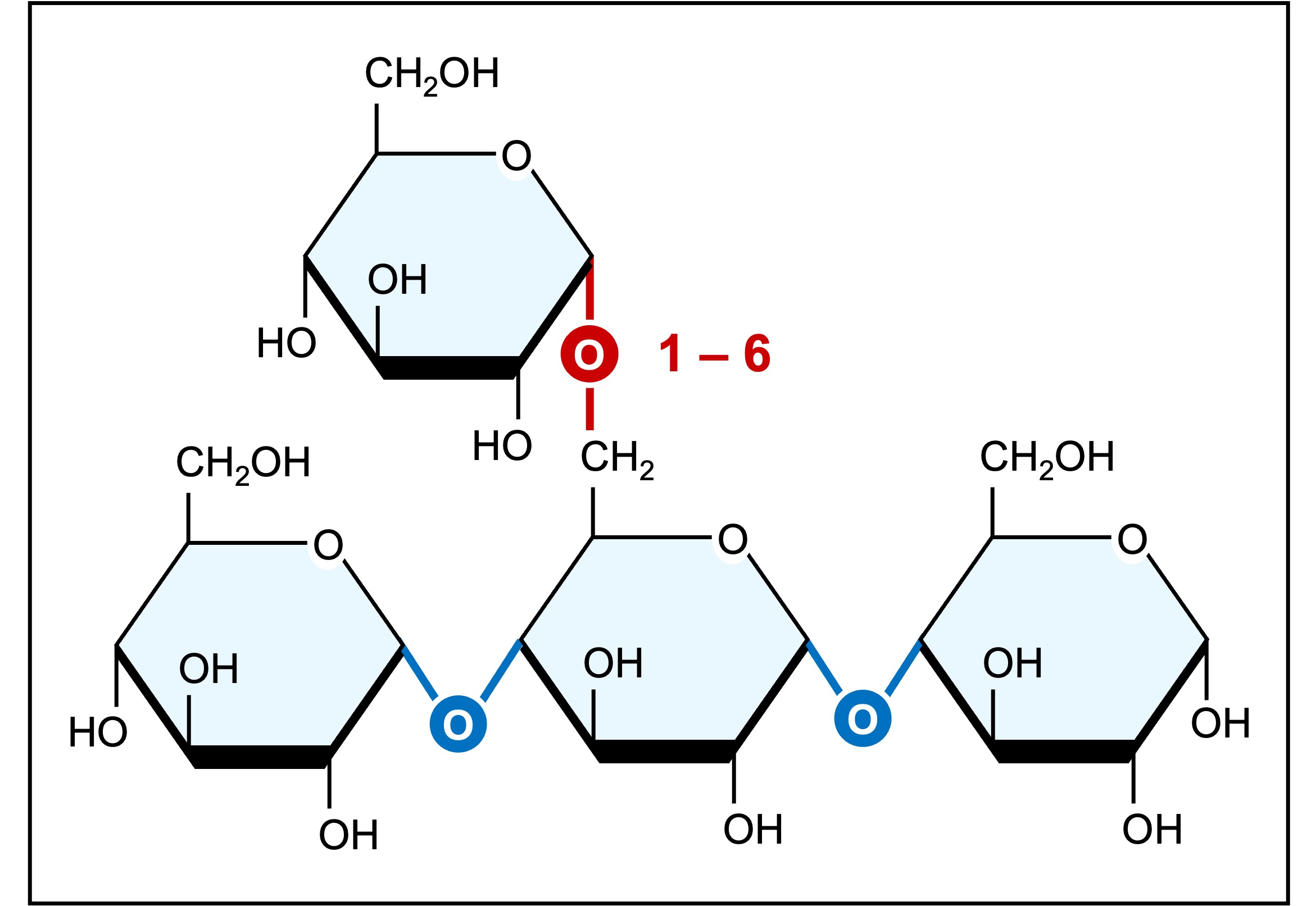
1–6 Linkages
Structure
Polymers of ß-glucose are used to form cellular structures – cellulose is a component of plant cell walls
-
Cellulose is composed of ß-glucose subunits in an alternating arrangement (every second glucose is inverted)
-
This allows cellulose to form straight linear chains that can be grouped in bundles and cross-linked with hydrogen bonds
-
These cross-linked bundles function to increase the structural integrity and mechanical stability of the polymer
Alternating Subunits

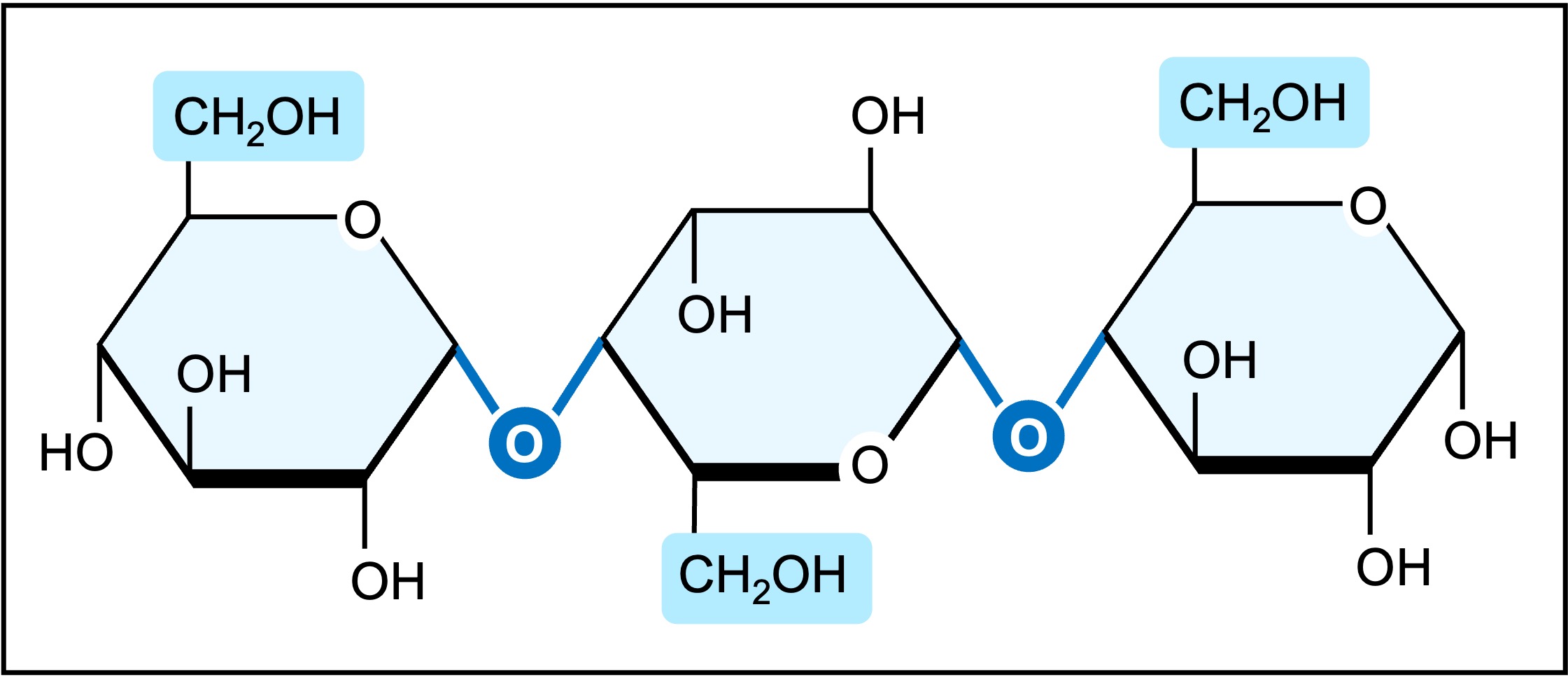
Communication
Carbohydrates can be attached to proteins via the process of glycosylation to form glycoproteins (‘glyco’ = sugar)
-
When carbohydrates are attached to membrane proteins they can perform key roles in cell–cell recognition
Human red blood cells can be categorised into different blood groups based on the structure of a surface glycoprotein
-
Individuals with blood group A possess type A glycoproteins, while individuals with blood group B possess type B glycoproteins
-
Additionally, individuals may possess both types of glycoproteins (AB blood) or no glycoproteins (O blood)
The glycoproteins function as identification tags to allow the immune system to recognise the cells as ‘self'
-
This is why blood transfusions are not compatible between individuals with different blood groups
-
The exception is AB blood which can accept any blood type (AB individuals possess both glycoproteins)
-



